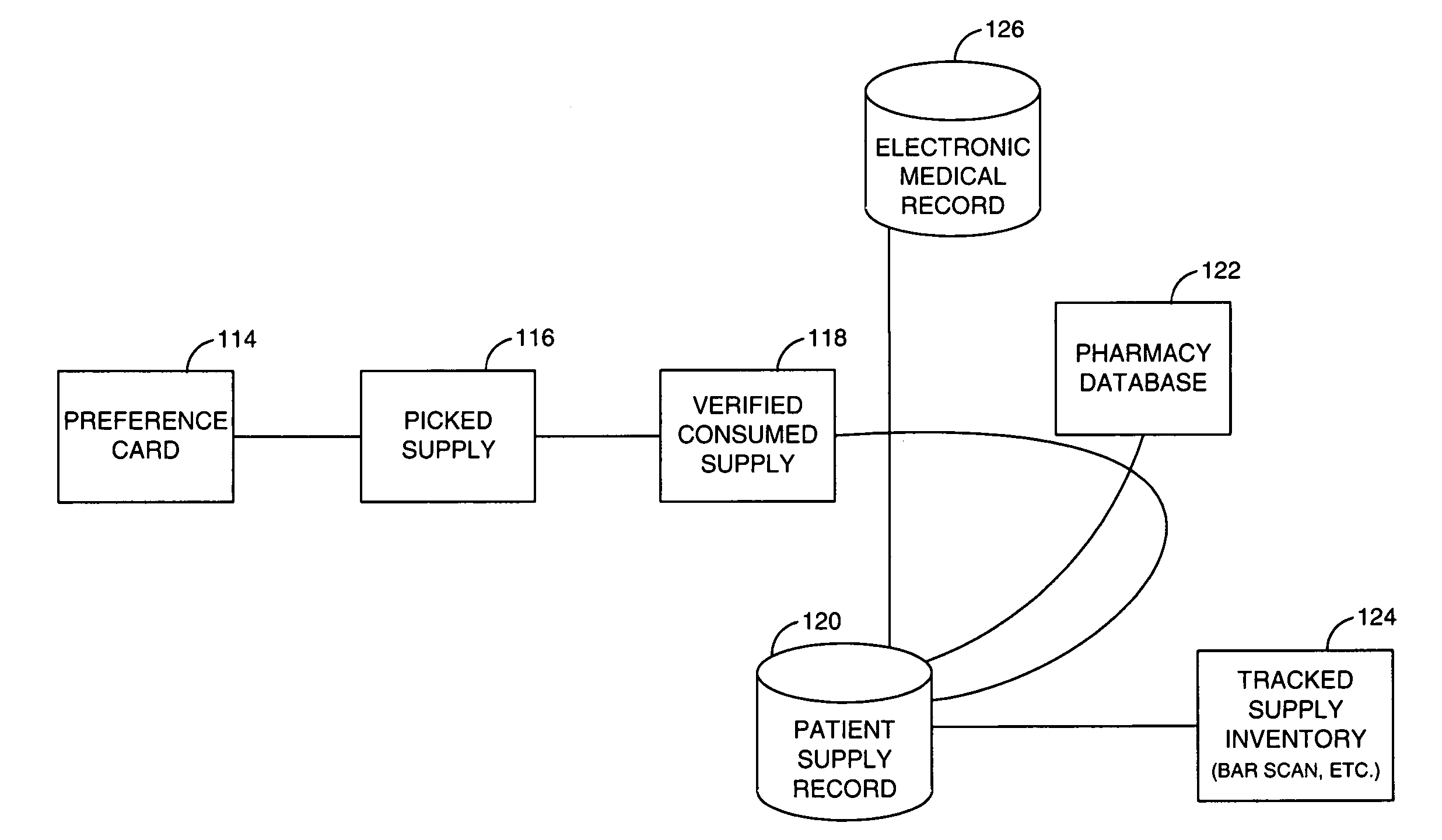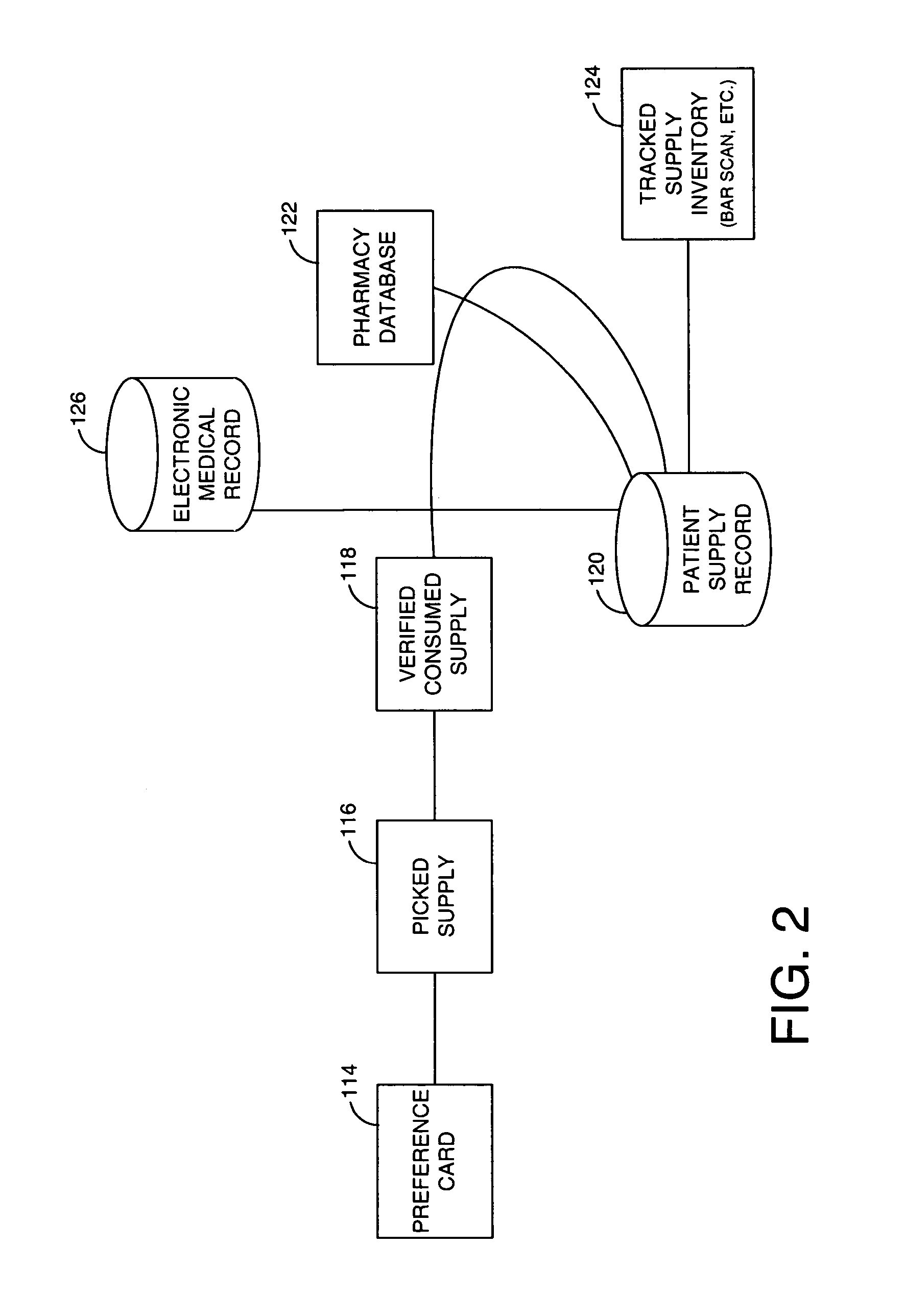System and method for management of clinical supply operations
a technology for clinical supply and management information, applied in healthcare informatics, data processing applications, healthcare resources and facilities, etc., can solve the problems of inability to accurately account for the cost of medical equipment, the platform suffers from disadvantages, and the billing department may be left with no alternative, etc., to achieve accurate cost accounting. the effect of the material
- Summary
- Abstract
- Description
- Claims
- Application Information
AI Technical Summary
Benefits of technology
Problems solved by technology
Method used
Image
Examples
Embodiment Construction
[0021]FIG. 1 illustrates an architecture in which a system and method for management of clinical supply operations may operate, according to an embodiment of the invention. As shown in that figure, different metrics which track different aspects of a hospital or other clinical operation may be collected and stored to various data stores. That captured data may include, for example, vendor or manufacturer data stored to a vendor database 102, purchase or transaction data for supplies and materials stored to a purchase database 104, and data regarding supplies which are picked or used from available supply which is stored to consumption database 106. Other data types and data stores are possible.
[0022] According to embodiments of the invention, each of vendor database 102, purchase database 104 and consumption database 106 may be linked to a volume database 108 which associates clinical supply purchases with vendor identifiers, clinical use and other variables to capture cost data in...
PUM
 Login to View More
Login to View More Abstract
Description
Claims
Application Information
 Login to View More
Login to View More - R&D
- Intellectual Property
- Life Sciences
- Materials
- Tech Scout
- Unparalleled Data Quality
- Higher Quality Content
- 60% Fewer Hallucinations
Browse by: Latest US Patents, China's latest patents, Technical Efficacy Thesaurus, Application Domain, Technology Topic, Popular Technical Reports.
© 2025 PatSnap. All rights reserved.Legal|Privacy policy|Modern Slavery Act Transparency Statement|Sitemap|About US| Contact US: help@patsnap.com



